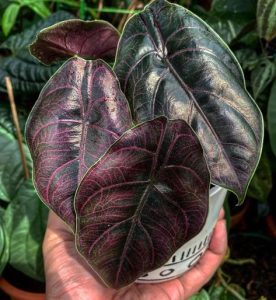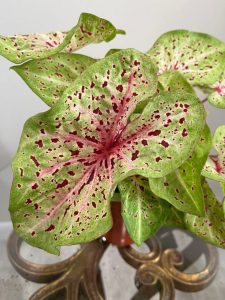- English
- Chinese
- French
- German
- Portuguese
- Spanish
- Russian
- Japanese
- Korean
- Arabic
- Irish
- Greek
- Turkish
- Italian
- Danish
- Romanian
- Indonesian
- Czech
- Afrikaans
- Swedish
- Polish
- Basque
- Catalan
- Esperanto
- Hindi
- Lao
- Albanian
- Amharic
- Armenian
- Azerbaijani
- Belarusian
- Bengali
- Bosnian
- Bulgarian
- Cebuano
- Chichewa
- Corsican
- Croatian
- Dutch
- Estonian
- Filipino
- Finnish
- Frisian
- Galician
- Georgian
- Gujarati
- Haitian
- Hausa
- Hawaiian
- Hebrew
- Hmong
- Hungarian
- Icelandic
- Igbo
- Javanese
- Kannada
- Kazakh
- Khmer
- Kurdish
- Kyrgyz
- Latin
- Latvian
- Lithuanian
- Luxembou..
- Macedonian
- Malagasy
- Malay
- Malayalam
- Maltese
- Marathi
- Mongolian
- Burmese
- Nepali
- Norwegian
- Pashto
- Persian
- Punjabi
- Serbian
- Sesotho
- Sinhala
- Slovak
- Slovenian
- Somali
- Samoan
- Scots Gaelic
- Shona
- Sindhi
- Sundanese
- Swahili
- Tajik
- Tamil
- Telugu
- Thai
- Ukrainian
- Urdu
- Uzbek
- Vietnamese
- Welsh
- Xhosa
- Yiddish
- Yoruba
- Zulu
- Kinyarwanda
- Tatar
- Oriya
- Turkmen
- Uyghur

Rongonui mo tona puka huatau me te atarangi tino whakamataku, Chlorophytum-Also e kiia ana ko Curre Orchid me te pungawerewere tarutaru-he tipu whakapaipai noa iho. Ko te tino rite ki te tipu o roto, he tino pai te chlorophytum ka taea te ora ki te whānuitanga o nga ahuatanga taiao. Tonu, ko te whanaketanga o Chlorophytum ka whakawhirinaki ki nga tikanga maama.

Chlorophytum
Chlorophytum’s light needs and growing patterns Native to South Africa is Chlorophytum. Of the Liliaceae family, this is a perennial evergreen plant. It may flourish in gloomy, semi-shaded, or sunny surroundings and is quite flexible. Nevertheless, the growth performance of Chlorophytum will vary under various light situations; this is mostly represented in the color of the leaves, the growth pace of the plant, and the blooming state.
Low light surroundings Strong shadow tolerance of Chlorophytum makes it a perfect indoor plant. Chlorophytum is appropriate for putting in areas with low light, including north-facing rooms or away from windows, even under low light settings because it can still maintain a decent development state. On the other hand, if it is in a low light environment for a long period, Chlorophytum’s leaf color may become duller and the leaf development rate will also slow down. Furthermore, spider plants are not simple to bloom in low light conditions; even when they do, the blooms are somewhat few.
Taiao maamaa
The most often used growing environment for spider plants in homes and offices is medium light, which also is their optimal condition. Usually referring to diffuse light or strong indirect light, medium light may be obtained by orienting windowsills east- or west-facing or by positioning windows close but apart from direct sunshine. Under such light, spider plants grow quicker, are more likely to blossom, and have brighter leaves. Spider plants’ branches will become denser, and the plant will seem generally more lively and healthier.
Mira Taiao
Ahakoa ko nga tipu pungawerewere he tino ma te ngawari, ka aukati te ra tika o te whanaketanga. I raro rawa i te maama, ka ngawari nga otaota o te pungawerewere ki te kowhai kowhai, he parauri ranei me nga rau rau e maroke ana. I te nuinga o te wa e tata ana ki te Matapihi-a-tonga, otira i te wa o te awatea, ko nga papa o te kowhatu e rite ana ki te aukati i te matapihi.
Nga rereketanga o te waa i roto i nga matea marama
Ko nga tau ka pa ki te hiahia mo te maama o te tipu mokowhiti. Ko te ako i tenei aratohu ka taea e nga tipu mokowhiti te whai tikanga marama mo te maha o nga tau, na reira ka whakapumau i to raatau whanaketanga pai.
Te raumati me te hinga
Ko nga waa tino pai mo te whakawhanaketanga o nga tipu mokowhiti he puna me te hinga; No reira, ko nga tikanga marama he mea nui rawa mo ratou. Ko te kaha ngawari o te pāmahana me te pāmahana e whakaaetia ana i roto i enei tau e rua ka tino tika mo te whakawhanaketanga o nga tipu mokowhiti. Ko nga tipu mokowhiti me pupuri i roto i te taiao-a-roto e pai ana te maarama i roto i tenei waa. Mena ka taea, te ata tika, te ahiahi ranei o te ahiahi, i te ahiahi ranei ka awhina i nga tipu pungawerewere tipu ka whanake me te whakatipu i o raatau rau, na reira kaha ki te whakapakari i a raatau.
Te raumati
Ko te ra o te raumati he tino kaha, ina koa i te poutumarotanga, ka taea e te awatea te ra, me te ra tika. Ko te tipu mokowhiti tipu i roto i te raumati me tino tiakina kia taea ai te tiaki i te ra tika. Mena me waiho te tipu pungawerewere ki waho, ka pai te whakaaro kia huri ki te rohe makariri, penei i raro i te rakau, i raro ranei i te parasol. Mena kei te tiakina te tipu pungawerewere ki roto, ka tohutohuhia kia tu atu i te matapihi, i te whakamahi ranei i nga pihi hei aukati i te ra.
Taka
Ko te maarama o te tipu pungawerewere ka huri me te ra o raro i te takurua me te poto ake te roa o te ra. Ki te whakawhānui ake i te roanga o te marama, ka tu te tipu tipu i te taha o te matapihi, i te taha tonga-tonga ranei i roto i tenei waa. Ko te ra e tika ana ki te awhina i te tipu o te mokowhiti kia noho ki te kowhai o te rau, ki te aukati ranei i te whanaketanga o te tipu na te mea kaore i te marama te marama.
Maama me te tae rau o te tipu pungawerewere
One may determine if the light of the spider plant is suitable by considering the change of color of its leaves. The leaves of a spider plant may seem brilliant green under appropriate light circumstances; other types have milky white or light yellow marks on the leaf margins. But the color of the spider plant’s leaves will also alter with changing light conditions:
Kaore e nui te whakamarama
The leaf color of the spider plant could becoming dull, less green, or even yellow under low light. The single green hue of the leaves’ marks will likewise progressively vanish. This kind of circumstance usually arises in darkly lit spider plants that have spent a lot of time in such conditions. Appropriate light increase may help to solve this issue.
Tino marama
Ko nga rau tipu pungawerewere ka kaha ake te tahu i te maama kanapa, e whakaatu ana ano he tapa maroke, ko te kowhai, he parauri ranei o nga rau. He nui rawa te ra ka taea e te whakamakuku te whakangaro i te chlorophyll i roto i nga rau, na reira ka whakaheke i a ratau. Ko te neke i te tipu mokowhiti ki tetahi waahi me te rama ngawari ka awhina ki te aukati i te ra tika-roa.
Nga rongoa mo te whakamarama kaore i te marama
Ko etahi o nga mahi ka mahia hei whakatairanga i te maama o te tipu pungawerewere i nga waahanga me te whakamarama i te whakamarama i te whanaketanga o te hauora.
Nga taapiri marama
Ka taea te whakamahi i te maama maamaa ki te whakapiki i te maama taiao mo te tipu pungawerewere i roto i nga ruma me te whakamarama iti, i nga haora ra poto ranei i te takurua. Ko nga taputapu rama rama noa ko nga rama tipu me nga topuku rama. Na te maarama o te maama taiao, e tohutohu ana kia whakaratohia te tipu mokowhiti 8 ki te 12 haora o te whakamarama i ia ra. Ina whakapai ake te rama, kia mahara ki te pupuri i tetahi tawhiti e wehe ana i te rama i te tipu hei aukati i te mura o te reihi.
Whakatika i te whakaritenga.
Nukuhia te whakato pungawerewere ki te waahi me te maama ake, tera pea kei te taha o te matapihi, i te taha ranei o te taupee ka taea e ia te marama. Nukuhia te tipu me te whai whakaaro mo te whakatikatika haere i nga taiao hou hei aukati i nga urupare a te ahotea i kawea mai e nga huringa tere.
Te tapahi me te tarai
The growth rate of the spider plant could slow down and the leaves might becoming thin or drooping under low light. Good pruning helps the plant to remain generally beautiful and stimulates the development of fresh leaves. Pruning concurrently improves photosynthesis’s efficiency and lessens the demand for light on the leaves.

Chlorophytum Amance Flash Flash
Te tipu pungawerewere Ko te tipu whakapaipai maamaa me te iti o te maama e tika ana mo te maha o nga momo taiao. Ahakoa tonu, ko te tipu o te tipu pungawerewere ka kaha ki te whakaawe i nga ahuatanga maama. Ko nga momo maama o te marama ka awe i te tae rau, te tipu tipu tipu, me te pungawerewere tipu mai i te iti ki te iti o te rama maama me nga ahuatanga maama. Na reira, ko te kaupapa nui ki te whakapumau i te whakawhanaketanga hauora o te tipu mokowhiti ko te mohio me te mohio ki o raatau matea maama me te aukati tika i te wa e tipu ana i roto i nga kaainga, i te taiao ranei. Na roto i te mana o te maama, kaore pea i te tipu te tipu huanga anake mo te whakapaipai taiao engari e whakarato ana i te hou me te koiora ki nga taiao o roto.
Previous News
The Chinese evergreen grows in an environment s...Next News
He pai te Ferns mo te whakato o roto


